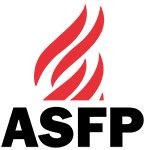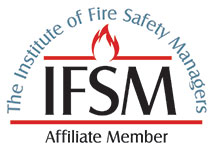Fire Door Inspections
Need a passive fire inspection? Contact us and one of our trained experts will help.
Welcome to Independent Fire Inspections, your valued and trusted partner in fire door inspections and passive fire management. Our comprehensive services ensure that your projects meet all necessary fire safety regulations through the use of cutting-edge technology and expert analysis.
Our Fire Door Inspection Services
We specialise in detailed and meticulous fire door inspections that help maintain the safety and integrity of your building. Our experienced team conducts detailed assessments to ensure compliance with the latest fire safety standards, including:
- Annual , six-monthly and quarterly fire door inspections
- Preventive Planned Maintenance (PPM) for hospitals and other critical facilities
- Integration with existing fire strategy drawings for a complete approach
All our inspections are thorough, and information is shared with all stakeholders. The information can be found on our highly efficient software management systems.
Innovative Software for Fire Safety Management
Our state-of-the-art software revolutionises the way fire door inspections are conducted and managed. Our system has been honed to cover all information required in inspections. The key features include:
- NFC and QR Code Integration
Our system uses Near Field Communication (NFC) technology and QR codes, which can be easily read by any smartphone. This allows for quick and accurate identification of fire doors, streamlining the inspection process.
- Real-Time Cloud-Based Information
With our cloud-based platform, clients have access to real-time information. This ensures that all data is up-to-date and accessible from anywhere, providing transparency and efficiency in managing fire safety.
- Fire Strategy Drawing Integration
Our software seamlessly integrates with fire strategy drawings. This ensures that all fire doors are accurately mapped and tracked, providing a comprehensive overview of your building’s fire safety status.
Benefits of Our System
- Efficiency: Quick and easy data capture using NFC or QR codes
- Accuracy: Real-time updates ensure the latest information is always available
- Compliance: Adherence to fire safety regulations and standards
- Accessibility: Cloud-based system accessible from any device
Compliance and Regulations
Staying compliant with fire safety regulations is crucial for the safety of occupants and the legality of your building operations. Our services ensure compliance with:
- Regulatory Reform (Fire Safety) Order 2005
- BS 9999: Code of practice for fire safety in the design, management, and use of buildings
- BS 8214: Code of practice for fire door assemblies
Contact Us
To learn more about our fire door inspection services and software solutions, please contact us on 01522 904189.
Ensure your building’s safety and compliance with Independent Fire Inspections.
More detail on Fire Door Inspections
Fire doors save lives and property. Independent Fire Inspections Ltd carry out fire door inspections and provide clients with a report to determine what is required for your doors to comply with the Regulatory Reform (Fire Safety) Order 2005.
The Fire Safety Act 2021
‘In the case of multi-occupied residential buildings, the Fire Safety Act puts beyond doubt that structure, external walls and flat entrance doors fall within the scope of the Fire Safety Order. The Fire Safety Act will require Responsible Persons to ensure that these elements are included in their fire risk assessments, if they have not been covered already.’
The Fire Safety (England) Regulations 2022 will make it a legal requirement from 23 January 2023 for responsible persons for all multi-occupied residential buildings in England with storeys over 11 metres in height to:
• undertake quarterly checks of all fire doors (including self-closing devices) in the common parts
• undertake – on a best endeavour basis – annual checks of all flat entrance doors (including self-closing devices) that lead onto a building’s common parts.
• The regulations will also require responsible persons to provide to residents of all multi-occupied residential buildings with two or more sets of domestic premises (that have common parts) information on the importance of fire doors to a building’s fire safety.
What is a fire door and what is a final escape route?
A fire door is a collection of components that includes the door leaf, frame, seals and essential door hardware, which are referred to in the door’s fire test evidence. This is called a fire door assembly and use of the wrong components may have a significant impact on the overall performance of the fire door.
A final escape door is the door used, in the event of an emergency, to exit the building and to reach a place of safety. It must operate correctly and be fitted with the correct hardware. Correct signage is also a mandatory requirement for fire doors and escape doors.

Why are fire doors important?
Fire doors are part of a buildings passive fire protection system and are fundamental to fire strategies for buildings.
They provide critical protection within a building, such as escape routes (stairs and corridors) and separate different fire hazards in a building.
Effective fire doors ensure rooms are compartmented, to help keep fire, and possibly smoke, in the area in which it starts, to protect occupants (and contents) of other compartments safe and to protect escape routes.
How often should fire doors be inspected?
Depending on the type of building you are responsible for and who occupies it will influence the frequency of fire door inspections required. Some buildings, such as schools and hospitals, are subject to heavy traffic and the doors have a hard time often being subject to repeated misuse.
BS9999 recommends six monthly inspections and includes guidance on some of the main inspection criteria, but remember that you are responsible for ensuring an adequate inspections and maintenance routine is in place.

Residential Buildings
The Fire Safety (England) Regulations 2022 makes it a legal requirement from 23 January 2023 for responsible persons for all multi-occupied residential buildings in England with storeys over 11 metres in height to:
• undertake quarterly checks of all fire doors in the common parts
• undertake annual checks of all flat entrance doors that lead onto a building’s common parts.
How do I know if my fire doors are fit for purpose?
Just like other life safety devices, such as fire extinguishers and alarms, fire doors and final escape doors need periodic inspection and maintenance to ensure that they will perform as intended in a fire situation. The Regulatory Reform (Fire Safety) Order places this obligation with the responsible person and for life safety devices it is prudent to seek advice from a competent person.
What is covered in our fire door inspections?
During a fire door inspection our technicians inspect each component of the fire door assembly including:

Door Leaf

Door Frame

Door closer (self-closing devices)

Hinges

Intumescent door strip and cold smoke seals

Glazing (vision panels)

Locks and levers/handles

Fire safety signage

Hold open devices

Gaps around the doors and threshold gaps

Panic hardware devices for external fire exit doors

Upon completion of fire door and final fire exit door inspections, a report is produced detailing the condition of each door and listing the areas of non-compliance, which creates a database and asset register for future on-going inspections.
Need a passive fire inspection? Contact us and one of our trained experts will help.
Accreditations










